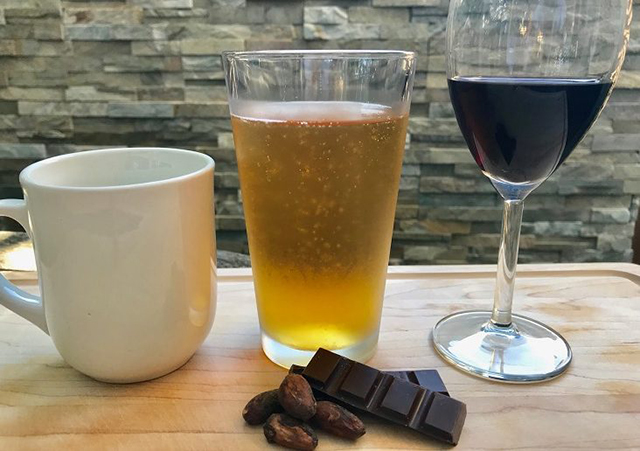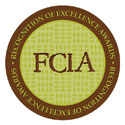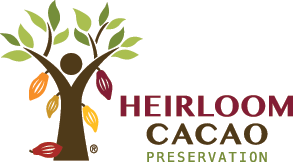/ Chocolate Resources / Chocolate Blog / Why fine chocolate ISN’T like fine wine, specialty coffee or craft beer

Why fine chocolate ISN’T like fine wine, specialty coffee or craft beer

And what this means for companies marketing fine chocolate to consumers
With the rise of bean to bar chocolate makers in the U.S. in the past decade, many have begun to consider where the industry will go in the future. The explosion of other segments of the “specialty” food industry, namely coffee and craft beer, and the continued popularity of wine has led many to suggest that bean to bar chocolate might travel down the same path. Where 20 years ago, someone would have scoffed at paying $5 for a specialty coffee beverage, many of us have adopted this expense as part of our daily morning routine. Sipping a craft beer on a Friday night with friends makes a fun social gathering just a bit more special.
Sure, there are many similarities between fine chocolate and these other industries – the delivery of a higher quality and/or unique product than is offered by the multi-national conglomerates who currently own the category; a return to an appreciation for craftsmanship and knowing exactly where your food comes from and how it’s made; and a willingness to pay more for these things as a consumer. People in the fine chocolate industry look to coffee and craft beer for lessons learned, which is important, but also with hope that our industry will get there too someday. When more people understand the value of fine chocolate and happily pay $6, $8 or more for a great bar of chocolate.
As an industry, we’ve spent a lot of time and effort strategizing and taking steps to help the public “get there”. Consumer education is a hot topic within the industry that can bring out polarizing opinions, such as “We have to turn everyone into chocolate snobs” countered by “None of that matters, if the chocolate tastes good, they will buy it again and again” and everything in between. How much information needs to be on packaging? How much is too much? Cocoa percentage, origin, the name of the farm, the type of sugar used, and so on. It can get overwhelming pretty quickly.
The one big difference
But going back to coffee, beer and wine for a minute, there is a fundamental difference between these products and fine chocolate. I wish I could say that I thought of this myself, but I have to give credit where credit is due – this came out of a conversation with our EC grad (see, our grads are SO smart!) Sarah Hartman. Coffee, beer and wine are all things that you consume and develop an appreciation for later in life, as an ADULT (perhaps some of us younger than others). For most people, our palates, hearts and minds have had little exposure to these products until into our 20’s (or even later when we have more disposable income to be able to afford the good stuff).
Chocolate on the other hand is something that most of us grow up eating as part of our childhood. By the time we reach adulthood, our relationship with chocolate has gone from a mild flirtation to a full blown love affair – from a treat for good behavior, or baking chocolate chip cookies at home, to celebrating birthdays and holidays, chocolate has always been there. And in times of sorrow, chocolate is there too as a comforting friend, a little pick me up after a bad day. By the time we reach adulthood, we already have a solid relationship with chocolate and it’s just fine thank you very much.
So we are not just asking people to try something new and see if they like it, in many ways we are asking them to re-learn what they think of as chocolate. It is almost as though we are marketing a completely new product to them, albeit with the advantage of a truckload of positive associations already attached. We have to get them to think about chocolate in a whole new way – yes, we know you love M&Ms, Hershey’s Kisses, Cadburys Dairy Milk, (insert name brand chocolate here) because you grew up eating that chocolate. And they can have a nostalgic place in your heart. But try THIS chocolate. It’s totally different from anything you’ve ever tried before. What do you taste?
So this becomes the challenge – HOW do we get consumers to let go of some of their preconceived ideas about chocolate and embrace what we are asking of them?
And it’s also of paramount importance to highlight the reason why all of this matters. Yes, it matters to the chocolate makers. While no one goes into the chocolate business to strike it rich, if they can’t run a profitable business, then there won’t be many more bean to bar chocolate makers. Many small chocolate makers are barely scraping by, and sadly some won’t make it. But it also matters because of the cacao farmers and their families.
Cacao is currently a commodity, and large, multi-national companies don’t care (in most cases) about the quality of the beans they buy because they are just going to add a bunch of sugar and other ingredients to it anyways. The majority of cocoa farmers live in poverty or close to it. Many farmers make the decision to rip out their cocoa trees and plant something more profitable, like bananas or rubber. Just a few months ago we shared the story from one of our friends & colleagues who made the difficult decision to sell his farm to the neighboring pineapple plantation.
If we want farmers to continue to grow a wide variety of cacao so that we retain that biodiversity of quality and flavor, they have to be paid more for their crops. Which means chocolate makers have to pay more for their beans. Which means consumers have to pay more for their chocolate bars made from these high quality, flavorful beans. All this happens within complicated economic, political and social climates, but it’s essentially that simple.
Meanwhile, what are some strategies that can help chocolate businesses achieve success? And how can we educate consumers to change their ingrained childhood chocolate habits?
Here are some strategies practiced by those chocolate makers and chocolatiers we know who are surviving in a very competitive market.
Maximize production efficiency:
Change will only come one dollar added at a time. We are asking consumers to go from paying $2 for a grocery store bar, to $4 for a drug store brand like Lindt (progress is happening in that price point), to $6 – $12 for a fine chocolate bar in a health or specialty food store. While that change happens, chocolate makers need to make sure they are as efficient as possible. Find ways of maximizing profit by watching your labor and production costs. Get those machines to work as independently as possible.
Be mobile responsive:
The days of just putting up a website or Facebook page and relying on that to ring the cash register are over. People use their phones for everything now and you want your message to be easy to access, your content easy to understand and your products easy to buy from that tiny little screen. We’ve all had that experience of trying to stretch the screen in odd directions on a site that’s not mobile responsive – don’t do that to your customers. If you don’t have a big budget to pay for ads on Google Adwords, Facebook and Instagram, you have to rely on google simply liking your content and website to get any results in a Google search. Remember those results are now regional so no matter how great you’ve done your Google SEO, Google will still only serve your results locally first. The days of being seen across the state, province or country or world for that matter in the top ten results are long gone.
Maximize penetration in your local/regional markets by focusing on the best possible flavor, and educate consumers whenever you can:
Encourage your consumers’ taste buds to kick start change. Giving consumers the opportunity to taste chocolate made with care and quality from cocoa beans from different origins is one of the first eye opening experiences in understanding the different yummy flavours that fine chocolate can have. And to begin to have an appreciation for those flavors beyond the sugary, sweet chocolate flavor many of us grew up eating. We are helping them to relearn what they think of as chocolate. Capitalize on the appreciation for specialty food by teaching them about the processes involved in making chocolate – many companies are doing a great job of this! But tasting isn’t as easy as it seems unless the chocolate maker has a store or factory front where they can provide samples and lead tastings. Those chocolate makers who only distribute wholesale to retailers or through online sales miss that face to face opportunity. They need to be proactive to provide inexpensive tasting packages or discounts off first purchase. Anything to get that sample of fabulous flavor (you better make sure it tastes great, not just good) into someone’s mouth so they will crave it again and again.
Promotion:
Change can only happen with continually beating the drum – not all chocolate is created equal and we have to keep telling our markets that through advertising, promotion and packaging. Over and over. We are only 10 years into the whole idea of there being ‘fine’ chocolate as opposed to ‘normal’ chocolate in most markets globally outside of the chocolate focused markets of Switzerland, Belgium and France. It will simply take more time for another generation to grow up with the understanding that there is a difference. The good news is that consumer interest in better health and transparency will go a long way to supporting that change.
Go after awards:
In the age of social media and online shopping, reviews are everywhere. The opinions of other people play a big part in the way we shop and what we buy. Go after positive reviews and awards both locally and globally. As bizarre as it sounds, you need to be able to prove in your advertising, promotion, packaging that other people like your products, and nothing does that quicker or with less investment than receiving a great review or an award. Be proactive and go after them – if you have multiple products that are contenders for a given category, don’t be afraid to submit more than one entry.
A few parting words
This is an exciting time to be part of the fine chocolate industry. There is a growing appreciation among consumers for the quality and craftsmanship behind an amazing bar of chocolate made from flavorful cocoa beans. Let’s continue to educate consumers and capitalize on that appreciation to move our industry into the future.
Want to learn more about making delicious chocolates and confections? Check out our Professional Chocolatier Program!
Get reminders about upcoming classes! To receive program updates and news, click the link below.
Photography by Jessica Washburn, Bliss Chocolatier and Ecole Chocolat





